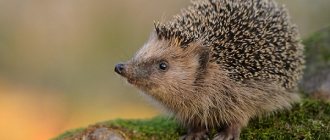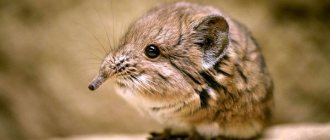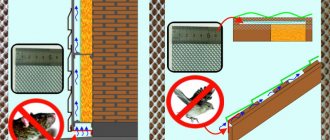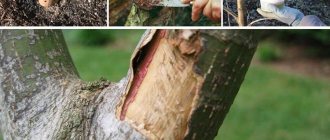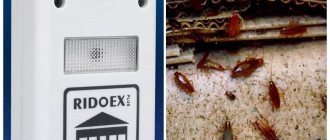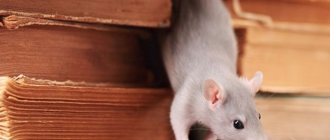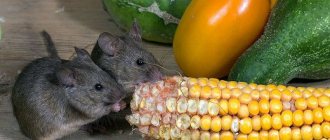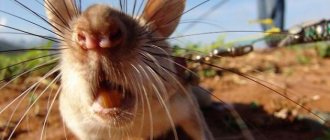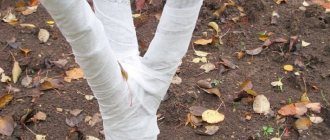Rodents are the richest order of mammals in terms of species diversity. Their characteristic feature is large incisors on the upper and lower jaws. The way of life, the functions performed by various parts of the body, and habitats determine the appearance of the various representatives of this order. The mass of rodents can range from five grams to several tens of kilograms.
Mammals of this order are found throughout the world. Where they did not exist, rodents were brought in specifically for various purposes. The only exceptions are the Antarctic region and some islands.
Family Gilts
Gilts live exclusively in South America in its most diverse climatic zones.
Representatives of this family have an elongated body, four-toed forelimbs and three-toed hind limbs, a short tail and neck, and a large head. Ears may be short, long, or absent altogether. The hairline is usually rough. The fur on the back is brown, gray, black or olive. The belly is light: color from white to dark yellow. Some species are nocturnal, others diurnal. However, none of them hibernate.
The family consists of 5 genera, which are represented by 15 species.
Abyssinian guinea pig
Peruvian guinea pig
Brazilian pig
Guinea pig
Djungarian hamster
A miniature rodent up to 10 cm long and weighing up to 65 g. Life expectancy is 10-12 months in the wild, and about 2-2.5 years in captivity (some individuals live up to four years). There are several color options - brown-gray (standard), gray-bluish (sapphire), matte white with gray intervals (pearl), red-cream (mandarin).
A distinctive feature is a dark strip of fur along the spine. It is curious that in winter the animals molt, and their fur becomes almost completely white.
They get along well in the same cage with representatives of their species.
Squirrel family
The family is divided into 5 subfamilies containing approximately 230 species. The most famous are the squirrel and the gopher.
Rodents of this family are widespread on all continents with the exception of Australia and Antarctica. A number of Arctic and tropical islands are also not inhabited by Squirrels.
These rodents can be small or large. Body length varies between 6-70 cm. Weight ranges from a few grams to 9 kg. All have a long tail covered with fur. Squirrels have strong, developed limbs and large eyes. The hair color can have stripes, spots or be one color: red, black, white, etc.
Chipmunk squirrel
prairie dog
Magellan tuco-tuco
Little chipmunk
Little gopher
Palm squirrel
Degu (Chilean squirrel, bush rat)
Relatively large rodents with a body length of 9 to 12 cm, of which about 7-9 cm “goes” to the tail. These are very social animals that get along well with each other, but it is still not recommended to breed them in large groups, since the rodent needs a lot of space for full development. The best option is to house a couple of degus of the same sex - this way the pets won’t get bored, and you won’t have to look for owners for numerous offspring.
Unlike guinea pigs, degus do not like to be treated freely and can bite strongly, therefore, when choosing a rodent for a family with small children, you should give preference to a more peaceful and phlegmatic animal.
If you have long wanted to have a pet, but doubt that you will be able to pay enough attention to it, start with a rodent. So, within a few months after purchasing the animal, you will understand whether your lifestyle allows you to take responsibility for a more “demanding” pet.
Family Hedgehogs
The species composition of this family is not the largest. However, 24 different species are known.
All Ezhovs have a number of characteristics that unite them into one family. These include a pointed, elongated muzzle, well-developed eyes and ears, and limbs with five fingers. A distinctive feature of the family is the skin with many needles interspersed with hairs of wool. These rodents also have a special muscle that runs through their entire body. She helps the animal curl up into a ball, escaping from predators.
The habitat of hedgehogs is Central and South Asia, Europe. They were once introduced to islands near Africa, where they spread safely.
Hedgehog
Maintenance cost
You also need to find out how expensive it is to maintain a particular animal. After all, equipping a terrarium for a turtle or an exotic lizard will cost a decent amount. And puppies and kittens are not cheap at all, but you also need to think about the costs of vaccination and possible treatment.
Aviary for chinchilla
Everything needs to be taken into account: necessary equipment, nutrition, treatment, care.
Family Mole rats
Mole rats are burrowing animals that are adapted to life underground. The family is divided into three subfamilies, which include more than 30 species of rodents.
Characteristic features of animals of this family are half-blind eyes, underdeveloped ears, short thick fur, and short limbs. The length of the body of various species can be from 0.13 to 0.48 m, and weigh from 100 g to 4 kg. Some species have powerful incisors with which they dig the ground. Other rodents use their front paws for this.
Mole rats live in Europe, Asia, and northeast Africa. They are also found on Russian territory.
Small bamboo rat
Lesser mole rat
Syrian (golden) hamster
Syrian, also known as golden, or Western Asian hamsters are small animals with a length of 13 to 14 cm, of which approximately 1.5 cm is in the tail. Weight – 100-125 g. They are omnivores, in natural conditions they feed on seeds, nuts and some insects (ants, flies, wasps, cockroaches). In captivity they can live up to 3-4 years. The color can be golden, white, black, silver or brown.
A solitary animal that does not require a partner for communication, but easily finds a common language with its owner.
Family Jerboa
These rodents live in desert, semi-desert, steppe, and low mountain areas. They inhabited northern Africa, some parts of Europe, Asia, Kazakhstan, southern Siberia, etc.
These mammals have a short body, elongated hind legs, and short forelimbs, with which they remove the earth dug out with their incisors. The size of these rodents is 4-25 cm, weight no more than 300 g. All species have a very long tail, which serves as a rudder and balancer when running. These animals have a short neck, a large head, long rounded ears and a uniform skin of beige-brown shades.
Jerboas, with rare exceptions, are nocturnal. They dig burrows, feed on plants and insects, and bear offspring one to three times a year.
Small jerboa
Desert jerboa
Life style
Probably the most important thing is that your future pet matches your lifestyle (are you a homebody or, on the contrary, like to travel). The animal is completely dependent on you, so if your work involves constant business travel, it is better not to take an animal.
Another important factor that is worth paying attention to is your attitude towards household chores. Let's face it: Almost every animal leaves a lot of trash . Animals molt, fur and feathers must be collected with a vacuum cleaner, and scales must be swept away. It is necessary to regularly clean litter boxes, cages, and aquariums.
If you like a clean, hassle-free home but want a pet, consider getting a gerbil, fish, or small bird that will happily live in a small cage or aquarium.
Family Gerbils
Gerbils are small rodents that look like mice. They can reach 20 cm in length depending on the species. Their weight ranges from 10 to 225 grams. These animals have a long tail, rather large eyes, and protruding ears. The color of their fur is unremarkable: the back is sandy or brown, and the belly is light.
The habitats of these rodents are desert, semi-desert, and steppe areas. They are widespread in Central Asia, Kazakhstan, and also in Africa. They are found in the smallest quantities in the Caspian region and Transbaikalia.
Gerbil Sundevalla
Sand mole rat
Clawed (Mongolian) gerbil
The gerbil looks like a mouse with a tassel on its tail. They are noticeably different in size from hamsters. Male gerbils can reach a length of 20 cm. It is curious that in captivity, males behave more friendly than females, while females are more active.
In the wild, gerbils live in groups consisting of one male and 2-3 females. Females and males care for the cubs together, however, as soon as the babies grow up, the parents “drive” them away from their territory.
On a note! The best food for gerbils is specially formulated mixtures for rodents. Cabbage, peas, potatoes, sour or too sweet fruits are strictly prohibited. Sometimes protein is added to the diet (egg whites, beetle larvae).
The structure and appearance of rodents
The majority of rodents are relatively small in size. But among them there are small and large animals: from a dwarf mouse weighing 7 g and 3 cm long to a ninety-kilogram capybara, reaching up to 130 cm in length. Rodents usually have such a long tail that it can be twice or even three times as long as their body. But in many representatives of the Miguels this organ may be completely absent. Animals of this order can have different body shapes. It depends on what kind of life is inherent in a particular clan. For example, for those who have to move a lot from place to place, sometimes even jumping, the hind limbs in the process of evolution have become much longer than the front ones. This applies to Tushkanchikovs and Belichichs. Those who need to dig holes for shelter and search for food need strong front paws with powerful claws and a rounded body shape.
The anterior incisors in rodents are enlarged and separated from the chewing teeth by a diastema. They have the ability to self-sharpen. Rodents also have no fangs at all. The skeleton of mammals is represented by a spine with 30 main vertebrae and an individual number of tail vertebrae, four limbs, a massive skull, and large eye sockets. The number and size of bones depend on the specific representative.
The body of rodents is covered with hair, usually of equal length and not very striking colors. In some of them, the hairs have formed into needles (the Hedgehog family). On the front part of the animals there are vibrissae, which perform the function of touch.
Giant snails (Achatina)
Any plastic container or miniature aquarium will be suitable as a home for such an exotic pet. The main condition is that the house must correspond to the size of its occupant and grow with the snail.
To prevent the mollusk from suffocating, several holes need to be made in the lid that covers the container, which will provide air access. A special soil should be poured onto the bottom - a mixture of peat and crushed coconut fiber. The substrate is moistened with a spray bottle, and it does not need to be renewed for 2-3 months.
The snails are fed with lettuce and dandelion leaves, and are also given carrots, pumpkin, cabbage, cucumbers, and watermelon. Interestingly, these snails eat dry food for aquarium fish with no less pleasure. The main menu must be supplemented with fertilizers for Achatina. The ideal option is crushed eggshells.
Characteristics and features
Rodents appeared on the planet more than 60 million years ago and have evolved greatly since then. Some species developed and changed, others completely disappeared.
Representatives of the rodent order inhabit a wide variety of climatic zones, living in warm and cold, wet and dry places, near water bodies and deep in forests, on plains and in mountainous areas. They live on the ground, underground, in trees, in swamps. And some species have even mastered the airspace, for example, the flying squirrel.
Various rodents exhibit vital activity either at night and twilight, or during the daytime.
These mammals can exist in groups with different numbers of individuals or be solitary. Their brain is quite large in size and does not have convolutions on its surface. Rodents are quite smart animals, they can perform the simplest actions, they have their own language for communication.
Well-developed sensory organs responsible for tactile sensations, hearing and smell enable rodents to recognize danger in time and avoid it, communicate with their own kind, find food and everything necessary for existence.
Rodents have elongated intestines. This is due to the consumption of food mainly of plant origin.
Decorative mouse
Decorative mice are, in essence, distant relatives of the well-known house mice (yes, the same ones that have the habit of settling not far from human homes and often “peeping into the light” of country houses in the autumn-winter period).
The only difference between such mice and their wild relatives is their colors - they are not found in nature.
Mice are social animals, so it is best to keep them in pairs or groups consisting of only females. Males will almost certainly not be able to live with each other.
Rodent nutrition
The basis of nutrition of these mammals is plant food. They eat leaves, shoots, seeds, berries, gnaw twigs, bark, etc. But not all rodents are only herbivores. There are also omnivores among them, who, along with roots and herbs, eat insects, snails, worms, bird eggs, and small vertebrates (for example, lizards). Species living near water can feed on fish, shellfish and various crustaceans.
Animals spend a significant part of their lives getting food. Some representatives, mainly among Khomyakov, Squirrel and Mouse, store food for the winter in burrows and hollows.
The diet of rodents depends on the seasonality of the year. In summer, food is varied and includes seeds, plant parts, insects, etc. In autumn, berries, fruits and root vegetables. In winter, wood, bark and roots. In spring, the first young shoots and leaves begin to grow, which are necessary for the growth and development of the body.
The weather also affects the diet. In hot weather, rodents forage for food at night, when it is cooler. When daytime temperatures drop, they become active during daylight hours. Weather, age, and place in the hierarchy (for social species) also influence feeding behavior.
You can read what squirrels eat in the forest in winter and summer in a special article -
Budgie
As with the canary, the only thing a parrot needs is a well-stocked cage. This means that it must contain mandatory interior items - a drinking bowl, a feeder and a bathtub. Important characteristics of the cell:
- rectangular shape;
- spacious;
- the presence of perches, swings, ladders;
- the presence of sand at the bottom of the cage.
It is best to place the parrot's house in a bright place. It is important to avoid drafts and direct sunlight.
You can feed the bird with specialized food or supplements, which are sold at any pet store. There are additional requirements for water, since tap or boiled water is not suitable for birds. Therefore, the best option would be drinking still water.
A few more recommendations for caring for a parrot that will not burden the owner too much:
- during the molting period, it is recommended to add 2-3 drops of freshly squeezed lemon juice to the drinker;
- To prevent the bird from growing the tip of its beak, which interferes with eating, the bird should sometimes be offered fresh branches (linden or rowan) or special mineral stones.
Reproduction of rodents
Animals of this order are very prolific. Females of small species can have several litters per year: from two to five. Moreover, each litter usually contains several cubs at once. The quantity varies from 5 to 15 pieces. And larger representatives of the order give birth once a year and no more than three cubs.
Some species give birth to underdeveloped young that require long-term care. And there are some animals that, after birth, are almost immediately ready to move independently.
Not only the number of annual litters varies greatly among species, but also the duration of pregnancy. In small animals it is short - only 18-20 days. And the larger the animal, the longer the pregnancy lasts. Muskrats, for example, remain in position for about 30 days, and nutria and capybaras for more than four months.
The population size depends on many environmental factors. In conditions of lack of food, it decreases, and vice versa. When the population increases excessively, some animals are even forced to migrate from their homes in search of new habitats.
Chinchilla
Chinchillas are active animals, which means that they need spacious and, preferably, multi-level cages where the rodent can freely perform its “acrobatic studies”. Separately, it is worth mentioning the care of your pet’s fur. A chinchilla should be given a so-called dust bath several times a week. To do this, sand is poured into a relatively deep container, for example, a deep cat litter box, or better yet, a special powder in which the animal falls out, cleaning itself.
Young chinchillas very quickly get used to a person, but not so much as to allow him to constantly carry them in his arms. He is unlikely to make a companion animal.
The importance of rodents in human life
The importance of rodents in human life is enormous. Some of them are a source of valuable furs, for example, the muskrat. Others are hunted for their meat and fat. Experiments are carried out on laboratory rodents to study diseases, drugs and other chemicals.
Rodents carry plant seeds, and underground inhabitants also loosen the soil, enriching it with oxygen and allowing water to better penetrate into the ground. They are hunted by predatory mammals. All this ultimately benefits the person.
Rodents also cause significant harm. They are carriers of various bacterial and viral infections, parasites and fungi. Rodents also cause harm to agriculture and households by eating, contaminating food and spoiling things. Therefore, in order to protect himself and his property, people regulate the number of synanthropes using traps and pesticides.
Representatives of the rodent order adapt well to changes in external living conditions. This makes it possible to tame them. Some species have long become familiar domestic animals. People keep some types of rats, guinea pigs, hamsters and others.
Rodents are an intermediate component of food chains that transform the biological mass of plants and animals. Their irrational destruction harms natural ecosystems. Therefore, they, as part of nature, suffering from the consequences of human activity, need to be preserved and protected.
Domesticated rat
Unlike their wild ancestors, modern domesticated rats are practically not afraid of people and willingly make contact. These are smart animals with a calm and “non-conflict” character.
Like any social creatures, they require constant communication, so in the absence of a “companion” they may begin to experience psychological stress. However, as practice shows, rats very quickly find a common language with humans and, if the latter pays enough attention to the animal, it becomes a faithful and devoted pet.
Angora rabbit
Angora rabbit
These rabbits were imported from Poland. Their colors vary. What’s interesting about rabbits is their “clothing”: up to 30 days, rabbits look like “ugly ducklings”, and by the 50th day they become “beautiful swans”. You should not breed those rabbits that have poor head pubescence. The rabbit must be constantly combed with a brush and cut out the rolled fur.
Interesting: The most poisonous plants - list, description, where they grow, photos and videos

